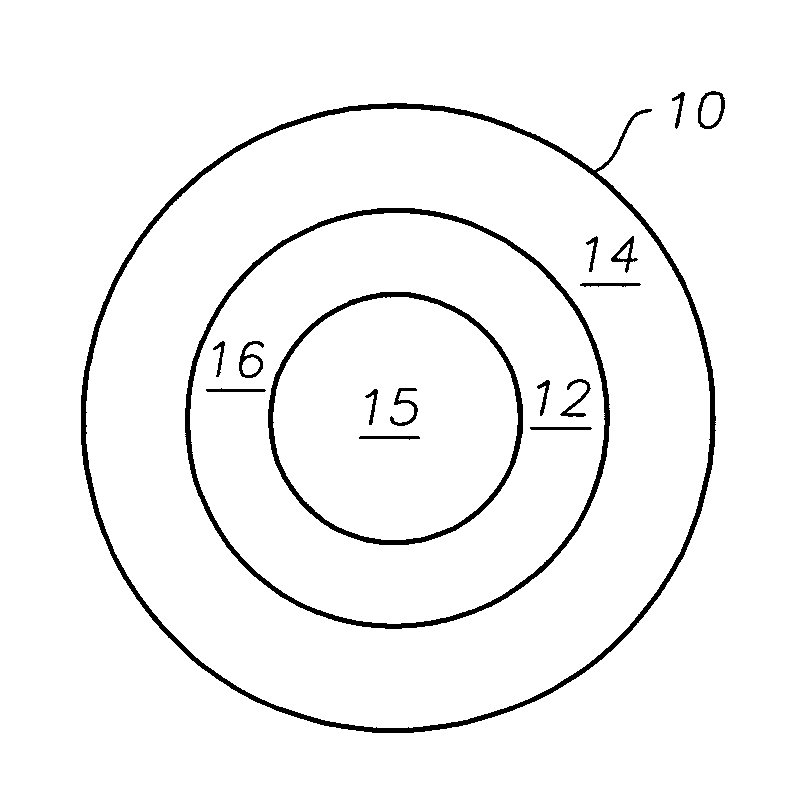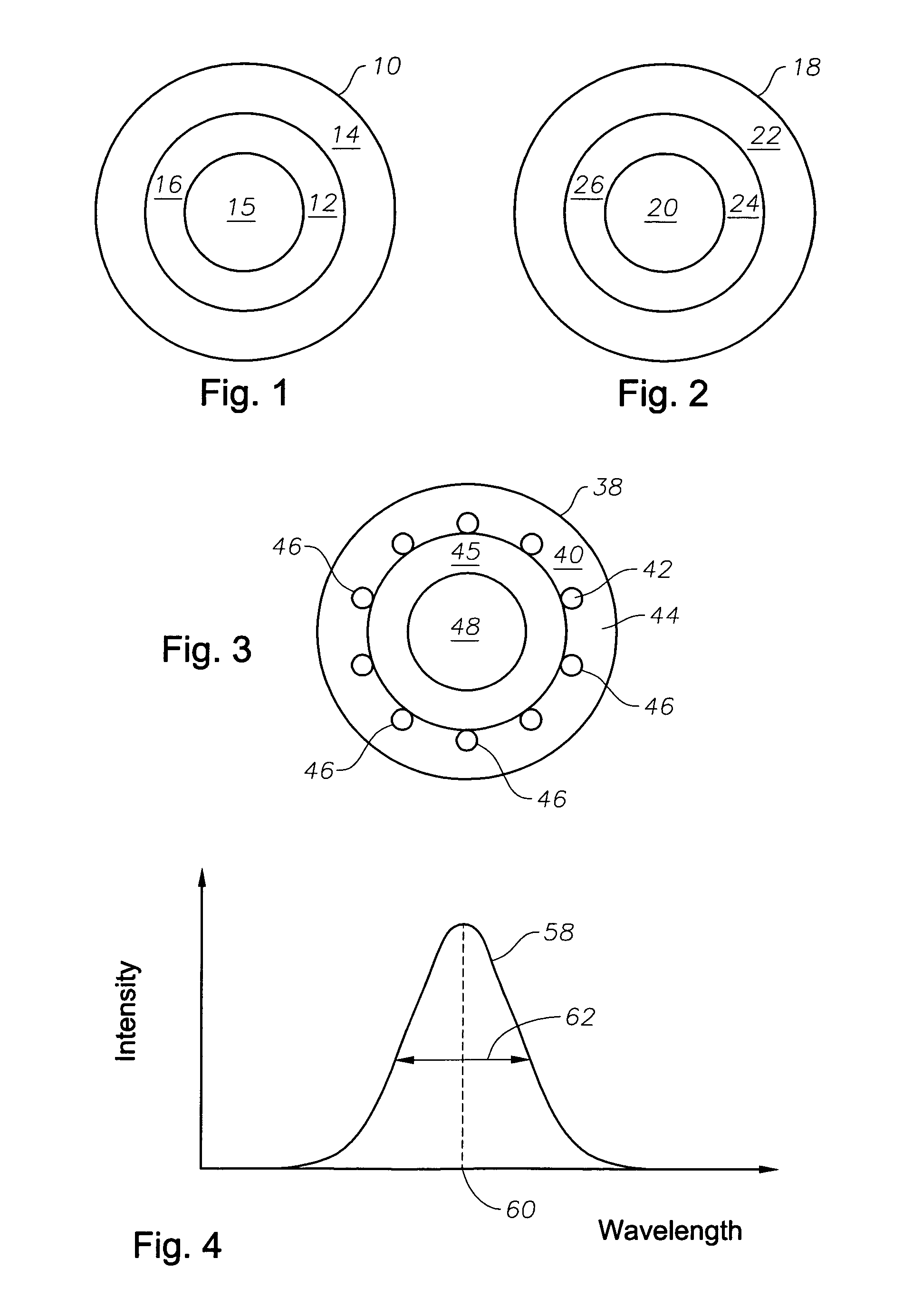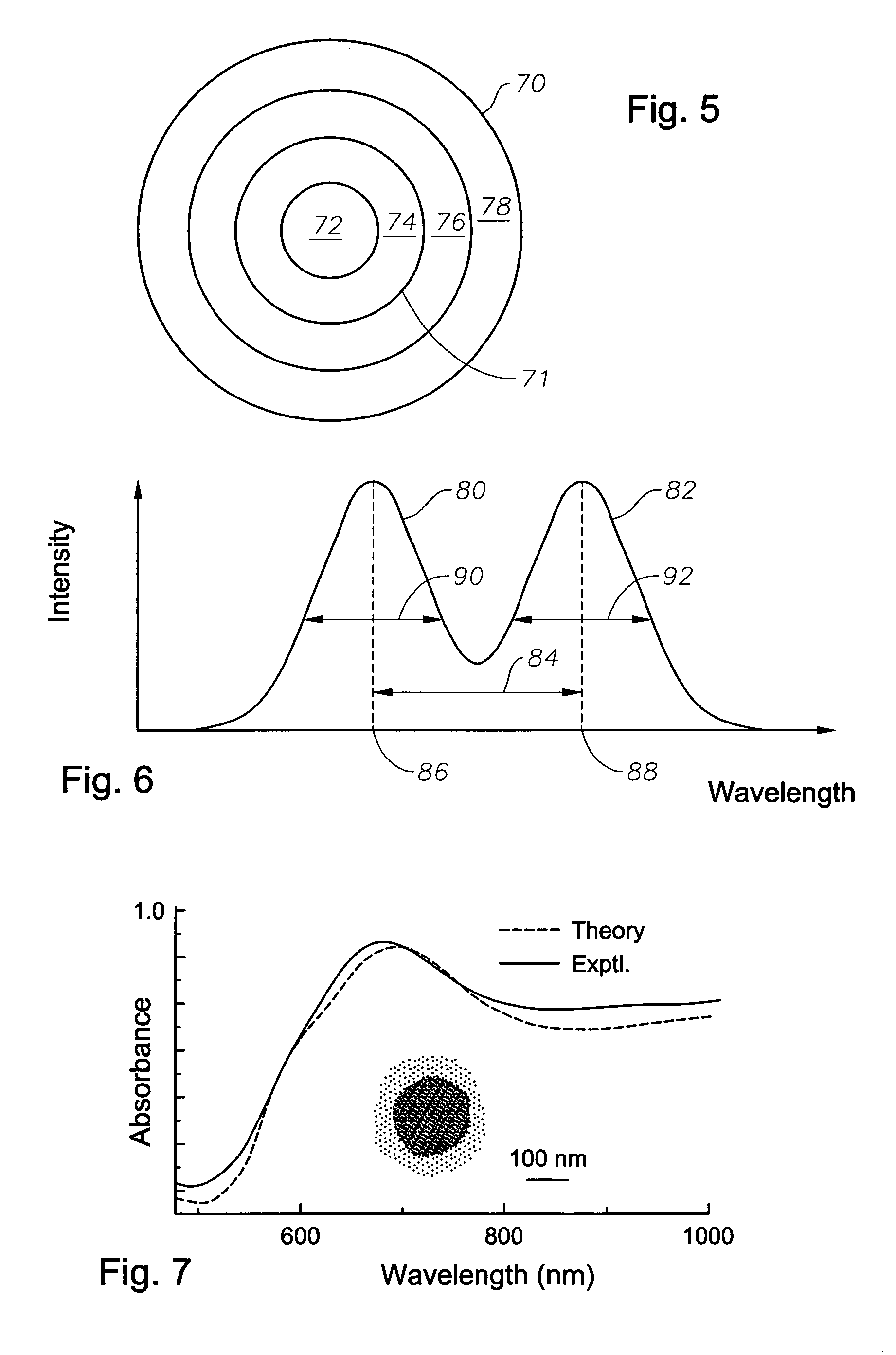Multi-layer nanoshells comprising a metallic or conducting shell
- Summary
- Abstract
- Description
- Claims
- Application Information
AI Technical Summary
Benefits of technology
Problems solved by technology
Method used
Image
Examples
example 1
Providing a Subparticle Having a Silica Core and a Gold Shell
[0087]Silica particles were grown using the Stöber method, described in W. Stöber, et al. Journal of Colloid and Interface Science 26, pp. 62–69 (1968), which is incorporated herein by reference. The silica particles produced each had a spherical shape, were approximately uniform in size, and had a standard deviation of less than 10% (4% is routinely achievable). Tetraethyl orthosilicate (TEOS) 99.999% was obtained from Aldrich Chemical Co., sodium hydroxide was from Fluka Chemical Co. and highly purified water was obtained from a Millipore “TOTALQ” system that included “MILLIQUV” and “MILLIQRO” filters. All glassware was cleaned with chromic acid solution and thoroughly rinsed with “TOTALQ” water.
[0088]Variations in base concentration, and TEOS concentration were used to produce monodisperse silica spheres of various sizes. Temperature and electrolyte concentration also affected the final diameter of the particles. Genera...
example 2
Forming a Silica Coating
[0095]A solution of subparticles each having a silica core and a gold shell was prepared using APTES to functionalize silica cores, attaching gold colloid to the silica cores, and reducing additional gold onto the gold colloids. This method is exemplified in Example 1 above. It has been observed that a silica coating can be grown on a subparticle having a partial shell just as easily as on a subparticle having a complete shell.
[0096]Purifying the subparticle solution included performing dialysis on the solution. Between about 20 and about 40 mL of a dilute aqueous subparticle solution having a concentration between about 108 and about 1010 particles / ml. The ultrapure water was Milli-Q water with no additives. This water was de-ionized and uv-irradiated. This water tended to be slightly acidic, that is with a pH between about 5 and about 7. The concentration of the subparticle solution was not observed to effect the dialysis process for concentrations in the r...
example 3
Enhanced Thermal Stability of Silica-Encapsulated Metal Nanoshells
[0105]In this example, fabrication of silica layers onto completed gold nanoshells is described. A series of experiments on silica-encapsulated and uncoated gold nanoshells were conducted, where both their structural and optical properties were observed following heating cycles over a range of temperatures. It was observed that thick (50–70 nm) silica encapsulation layers greatly improved the thermal stability of gold nanoshells, preserving both the structural integrity of the metallic layer and the optical properties of the original nanostructure. For the silica-encapsulated nanoshells, an increase in thermal stability of more than 300 degrees Celsius, relative to uncoated nanoshells, was observed. The effectiveness of this thermally-stabilizing silica layer was observed to be dependent on its thickness: fissures that seemed to appear frequently in thinner layers appeared to compromise the encapsulation, and thus the...
PUM
| Property | Measurement | Unit |
|---|---|---|
| Temperature | aaaaa | aaaaa |
| Temperature | aaaaa | aaaaa |
| Length | aaaaa | aaaaa |
Abstract
Description
Claims
Application Information
 Login to View More
Login to View More - R&D
- Intellectual Property
- Life Sciences
- Materials
- Tech Scout
- Unparalleled Data Quality
- Higher Quality Content
- 60% Fewer Hallucinations
Browse by: Latest US Patents, China's latest patents, Technical Efficacy Thesaurus, Application Domain, Technology Topic, Popular Technical Reports.
© 2025 PatSnap. All rights reserved.Legal|Privacy policy|Modern Slavery Act Transparency Statement|Sitemap|About US| Contact US: help@patsnap.com



